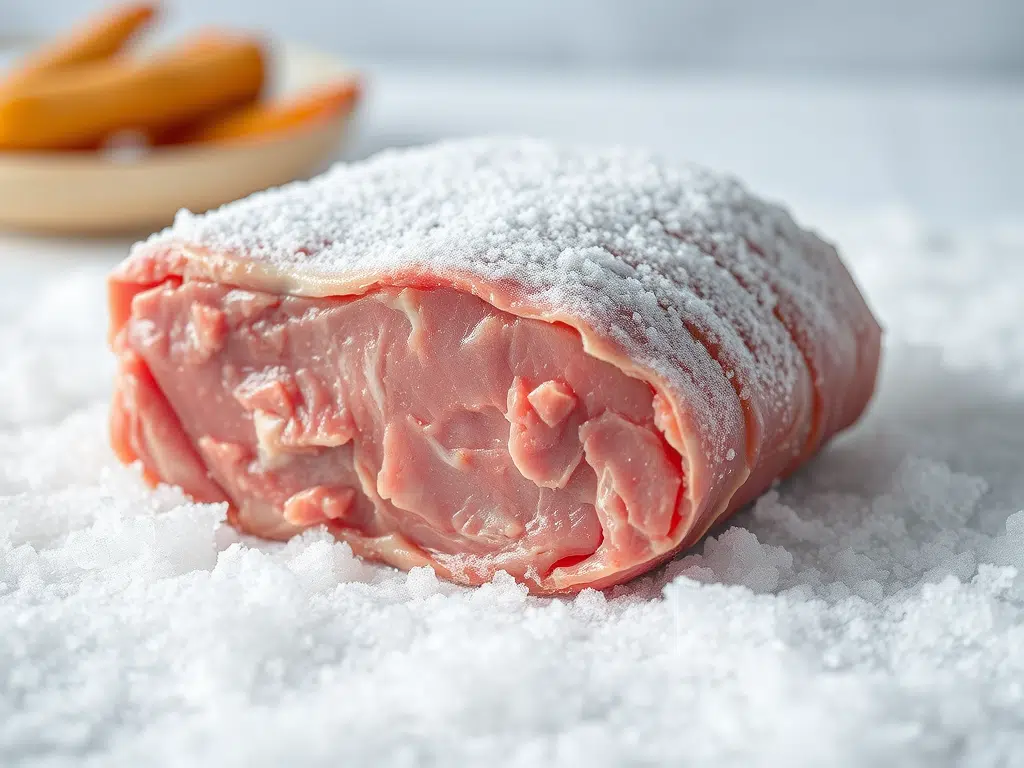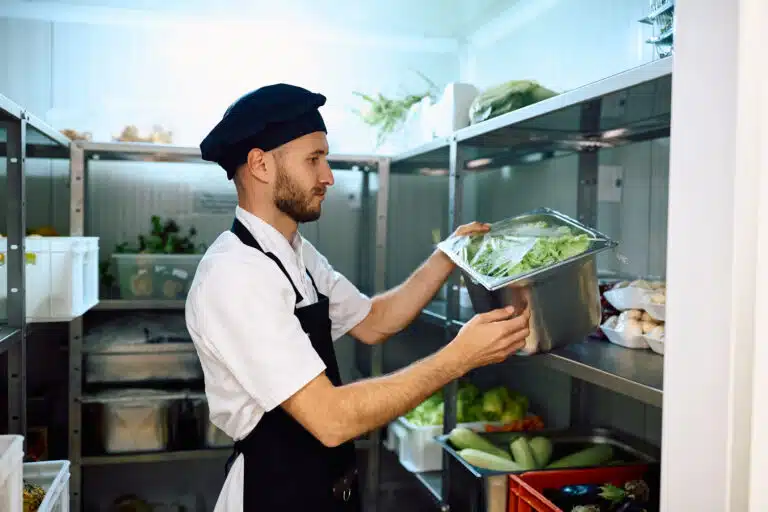Cooking meat from frozen is a common question for home cooks and food businesses alike, especially with busy schedules and the convenience of frozen products. But is it safe? In the UK, food safety regulations, governed by the Food Standards Agency (FSA) and Food Standards Scotland (FSS), ensure that proper cooking practices eliminate harmful bacteria like Salmonella and E. coli. Our 2025 Food Hygiene Ratings Report highlights the importance of compliance, with top-rated regions like Northern Ireland (4.80) excelling in safe practices. This guide explores whether cooking meat from frozen is safe, key temperature requirements, and tips to ensure food safety, helping you avoid the pitfalls seen in lower-scoring areas like London (4.40).

Is Cooking Meat From Frozen Safe?
Yes, it is generally safe to cook meat from frozen in the UK, provided you follow specific guidelines to ensure it reaches the required internal temperature to kill harmful bacteria. The FSA and FSS confirm that most meats—such as chicken, beef, pork, and fish—can be cooked from frozen using methods like roasting, grilling, or boiling, but precautions are necessary to avoid undercooking or uneven cooking. Unlike defrosted meat, frozen meat takes longer to cook, and ensuring the core temperature meets UK standards is critical to prevent foodborne illnesses.
Our Kitchen Colour Coding Guide 2025 emphasises using dedicated equipment (e.g., red chopping boards for raw meat) to prevent cross-contamination when handling frozen meat, a practice essential for compliance with the Food Safety Act 1990.
UK Cooking Temperature Requirements for Frozen Meat
Cooking frozen meat requires adherence to UK temperature standards to ensure safety. Scotland’s FSS and the rest of the UK’s FSA have slightly different requirements, particularly for reheating, as outlined below:
| Meat Type | Scotland (FSS) | Rest of UK (FSA) |
|---|---|---|
| Poultry (e.g., Chicken, Turkey) | Core temperature of 75°C for 30 seconds, checked in the thickest part (e.g., leg). No pink meat, clear juices. | Core temperature of 70°C for 2 minutes or equivalent (e.g., 75°C for 30 seconds). No pink meat, clear juices. |
| Minced Meats (e.g., Burgers, Sausages) | 75°C for 30 seconds. No pink meat, clear juices. | 70°C for 2 minutes or equivalent. No pink meat, clear juices. |
| Whole Cuts (Beef, Lamb) | Can be served rare if the surface is sealed (changes colour). Rolled joints must reach 75°C for 30 seconds. | Can be served rare if the surface is sealed (changes colour). Rolled joints must reach 75°C for 30 seconds. |
| Pork | 75°C for 30 seconds, no pink meat. | 70°C for 2 minutes or equivalent, no pink meat. |
| Fish | 75°C for 30 seconds, steaming hot throughout (blue equipment). | 70°C for 2 minutes or equivalent, steaming hot throughout. |
| Reheated Meat (e.g., Leftovers) | 82°C for immediate consumption or sale, per The Food Hygiene (Scotland) Regulations 2006. | “Steaming hot” (typically 70°C for 2 minutes or equivalent). |
Note: Use a clean food thermometer to check the core temperature, inserting it into the thickest part. Frozen meat may require 1.5 times longer cooking time than thawed meat to reach these temperatures.
Risks of Cooking Meat From Frozen
While safe with proper precautions, cooking meat from frozen carries risks if not done correctly:
- Uneven Cooking: Frozen meat may cook unevenly, with the exterior browning while the core remains undercooked, risking bacterial survival.
- Extended Cooking Time: Frozen meat takes longer to reach safe temperatures, potentially leading to errors if rushed.
- Cross-Contamination: Handling frozen raw meat without proper colour-coded equipment (e.g., red for raw meat) can spread bacteria like Salmonella.
- Allergen Risks: Improper handling may contaminate allergen-free areas, critical for compliance with Owen’s Law.
Businesses in low-scoring areas like Waltham Forest (3.95) in our 2025 report often face issues due to inadequate temperature control or cross-contamination.
Tips for Safely Cooking Meat From Frozen
To ensure safety and compliance with UK regulations, follow these best practices:
- Use a Thermometer: Always check the core temperature (75°C in Scotland, 70°C elsewhere) to confirm safety.
- Adjust Cooking Time: Increase cooking time by approximately 50% compared to thawed meat. For example, a frozen chicken breast may need 30–40 minutes at 180°C instead of 20–25 minutes.
- Follow HACCP Principles: Use colour-coded equipment (red for raw meat, yellow for cooked) to prevent cross-contamination, as detailed in our Kitchen Colour Coding Guide.
- Avoid High-Risk Methods: Don’t use slow cookers or microwaves for frozen meat, as they may not heat evenly to safe temperatures.
- Store Properly: Cool cooked meat to 8°C or below within 1–2 hours and store in colour-coded containers to maintain safety.
- Reheat Correctly: In Scotland, reheat to 82°C; elsewhere, ensure “steaming hot” (typically 70°C for 2 minutes).
Why Proper Training Matters
Cooking meat safely, whether frozen or thawed, requires knowledge of UK food hygiene standards. Skilltopia’s Level 2 Food Hygiene training equips food handlers with skills to manage temperature control and cross-contamination, while our Level 3 Food Hygiene training trains managers to implement HACCP plans and prepare for EHO inspections. With 5-star Google reviews, our courses help businesses achieve top ratings, unlike struggling areas like Birmingham (4.18) in 2025.
Conclusion: Cook Frozen Meat Safely with Confidence
Cooking meat from frozen is safe in the UK if you follow FSA and FSS guidelines, ensuring core temperatures of 75°C (Scotland) or 70°C (rest of UK) for high-risk foods and 82°C for reheating in Scotland. By using thermometers, colour-coded equipment, and proper cooking methods, you can eliminate risks like uneven cooking and cross-contamination. Skilltopia’s Level 2 and Level 3 Food Hygiene courses provide the training needed to comply with these standards, helping your business achieve a 5-star hygiene rating in 2025. Start today to ensure safety and build customer trust!






